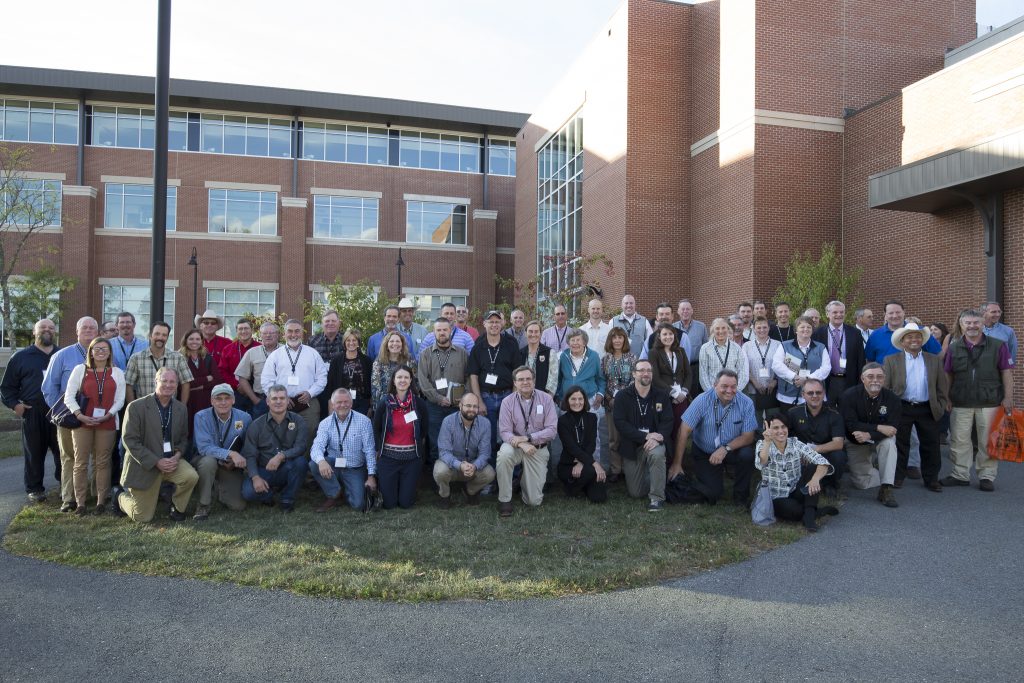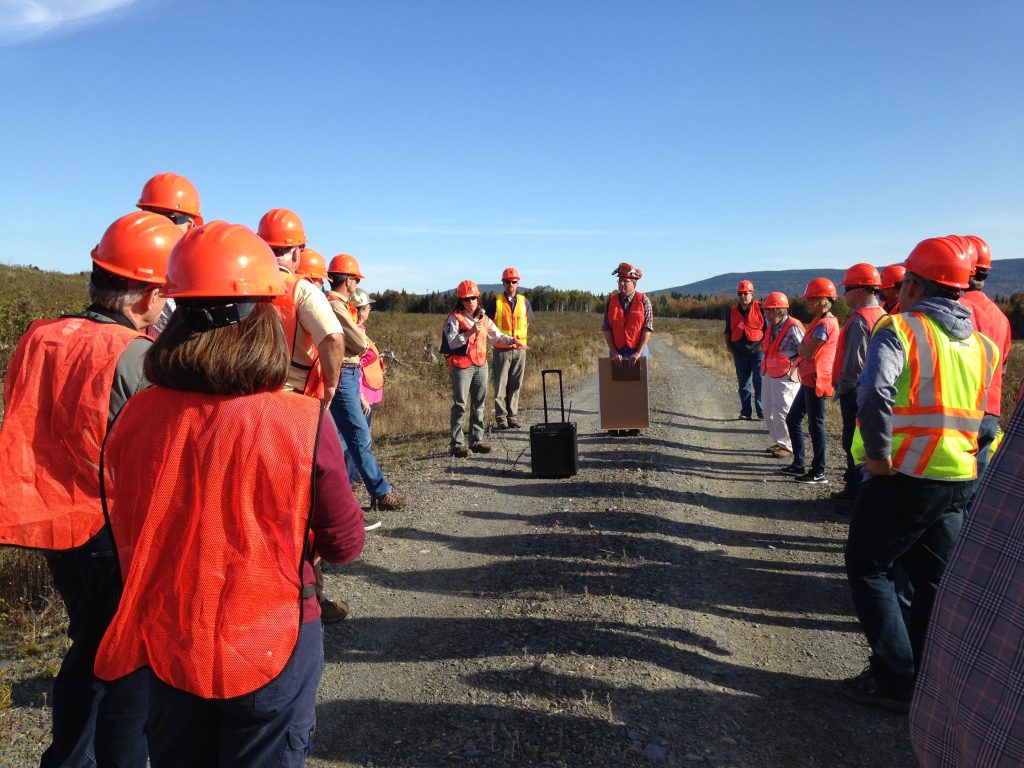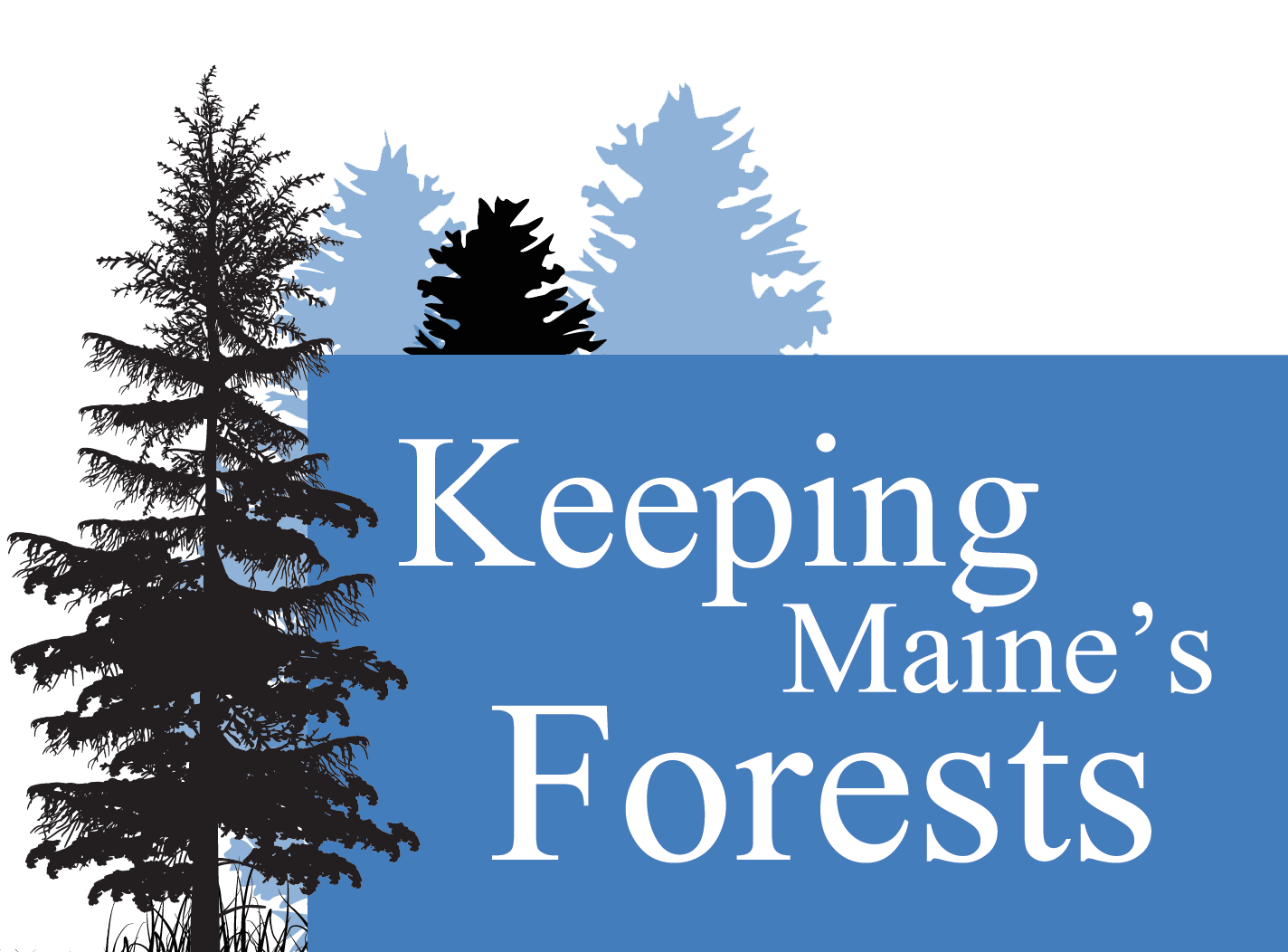Our Latest Project: Understanding Maine’s Tree Growth Tax Law
10th Annual Private Lands Partners Day Conference
Keeping Maine’s Forests hosted the 10th Annual Private Lands Partners Day conference, October 3-5, 2017 in Bangor. The national conference highlights collaborative efforts between private and public agencies to conserve natural resources. KMF’s co-hosts for the event were Partners for Conservation, the US Fish and Wildlife Service, and the USDA Natural Resource Conservation Service.
Two hundred people, including landowners and their representatives, staff from state and federal agencies, conservation groups, and universities gathered to highlight voluntary, incentive-based conservation collaborations in the state and other areas of the country.

The conference theme, “The Maine Woods: A landscape of working forests and collaborative conservation,” showcased how economic interests and conservation are balanced in a multiple-use forested landscape. The speakers and panels provided insights into conservation practices that support communities and improve wildlife habitat and forest health.
Maine is home to the largest contiguous area of privately owned forest in the country, and, at 18 million acres, the largest intact temperate forest in the western hemisphere. The state’s vast landscape supports the largest population of lynx in the lower 48, over 90 percent of the remaining native brook trout habitat in the eastern U.S., and the country’s last stronghold for wild Atlantic salmon.

A full-day field trip highlighted: the Penobscot River Restoration Project, which reconnected 2,000 miles of river to the sea while providing continuous power generation; ongoing efforts to replace culverts to improve river health and fish habitat and reduce flooding risks; and the vast 3.5 million acres of forest conservation easements that ensure continued timber culture and wood supply, support fish and wildlife habitat, and maintain public access for recreation.
In-house conference presentations highlighted partnerships from across the country, including efforts to conserve at-risk species like the New England cottontail, the region’s only native rabbit, and the greater sage grouse; and efforts to recover listed wildlife including the Canada lynx and red-cockaded woodpecker.
Sustainable Forestry Initiative Certification and Carbon Markets
Keeping Maine’s Forests (KMF) collaborated with Maine’s Implementation Committee of the Sustainable Forestry Initiative (SFI) to undertake a study of Maine’s SFI-certified landowners’ participation in carbon credit programs. Forest lands must be certified as sustainably managed in order to be eligible for the California carbon credit market, and millions of acres of Maine’s commercial forest lands are enrolled in the SFI program. Yet, none has enrolled in potentially lucrative carbon credit programs. The KMF study enlists the expertise of a panel of advisors from the University of Maine’s Climate Change Institute, Maine land managers and forestry experts, and a professional carbon project developer to find out why. Entire publication: Carbon Markets in Maine
Spruce Budworm Forum
Keeping Maine’s Forests has been instrumental in providing a forum for interest groups to learn about Maine’s impending spruce budworm outbreak, and to provide input to industry and state leaders about the concerns of the environmental and conservation communities.
In 2013, signs of an impending outbreak of spruce budworm in Maine’s northern forest became evident. For those who are old enough to have witnessed the outbreak in the 1970s, the news raised alarm.
The eastern spruce budworm is believed to be the most damaging forest insect in Maine and North America. Outbreaks of the insect that kills balsam fir and spruce trees occur every 30 to 60 years. Severe defoliation in southern Quebec as of 2016 covers an area the size of Maine.
During the last outbreak, the insect decimated up to 25 million cords of spruce and fir − 21 percent of all fir trees in the state, according to the Maine Forest Products Council. The infestation cost the state’s forest-based economy hundreds of millions of dollars and had lasting effects on forest management practices and regulation, and wildlife.
The Maine Spruce Budworm Task Force formed in 2013 to study the economic and ecological effects that another outbreak might have on the state and a strategy to minimize those effects. Leading the task force were Robert Wagner, director of Center for Research on Sustainable Forests and Cooperative Forestry Research Unit the University of Maine, and KMF members Patrick Strauch of the Maine Forest Products Council, and Doug Denico, director of the Maine Forest Service. Task force teams included about 65 experts who focused on wood supply and economic impacts; monitoring and protection; forest management; policy, regulation and funding; wildlife habitat; communications and outreach; and research priorities.
A draft of the report was released for public review in November, 2014. That month, Keeping Maine’s Forests convened a forum for interest groups, regulators, and lay people to hear the Task Force’s finding and recommendations, and to provide feedback. The questions and comments provided to the Task Force by forum attendees helped to shape the final report.
KMF continues to follow the outbreak, learn how it will affect the forest products industry and environment of northern Maine, and help to disseminate information so that Maine can manage the damage from this indigenous insect.
Go to http://www.sprucebudwormmaine.org for the latest news and data.
Aquatic Connectivity
Working with state, federal, and nonprofit fisheries habitat managers, this KMF project offers technical assistance to identify, prioritize, and remove barriers to fish passage in high priority watersheds. Training programs, and/or technical and financial assistance are provided to landowners, depending their interests and needs.
Maine contains 90% of the intact brook trout habitat in the eastern United States. Brook trout are a critical species for the recreational fishing industry in northern Maine; improving brook trout habitat will have direct economic benefits to guides and tourism businesses in the region who will be able to claim access to the best trout fishing in the east.
However, logging road stream crossings – culverts and bridges – can block fish passage, depending on their state of repair. In the lower and mid Penobscot River watershed alone, 770 severe culvert fish barriers have been identified. Investing coordinated resources and expertise to improve stream crossings and stabilize stream banks is a wise use of private and public funds with significant potential economic benefits.
Undersized or ill-designed culverts are a problem throughout Maine, both on public roadways and smaller roads throughout working forest lands. Several KMF partner organizations including Downeast Lakes Land Trust, Appalachian Mountain Club, Maine Audubon and the Sustainable Forestry Initiative, are involved in efforts to educate people about the problems created by improper stream culverts and ways to replace them so that water quality and fish habitat are restored.
This video by U.S. Fish & Wildlife Servicehelps to explain what happens to a stream when culverts are improperly installed and how to restore them to more natural conditions: Restoring Roads, Streams and Fish Through Improved Culverts – National Fish Passage Program Part 3″
To date, NRCS has worked with the Appalachian Mountain Club to remove six culverts on their property. NRCS engineers designed the remediation work to remove the culverts and restore the stream banks in accordance with the landowner’s wishes. Prior to construction, stream monitoring data was collected, and brook trout were removed from the construction site. USFW secured the necessary permits and funded the project in its entirety. There were no costs to the landowner, but the landowner was responsible for hiring the contractor. The removal of the three culverts has reconnected three miles of stream habitat identified by the Maine Department of Inland Fisheries and Wildlife as wild brook habitat.
MPBN Maine Watch program on stream restoration work (15-minute mark)
Recreation in the Maine Woods
Maine is unique in its vast forests that are both privately owned and managed, and unfragmented. Some states have large forests, but they are usually public lands. Other states have privately owned and managed forests, but generally not on the scale of Maine’s multimillion-acre forest landscape.
Maine is also unique in its tradition of allowing public access to private lands for recreational uses. Mainers are proud of their history of private stewardship and public access; yet, many visitors have expectations of what they will see and experience in the North Woods that are more appropriate to public lands or parks.
KMF has developed print media to inform visitors about what they can expect to experience in the North Woods of Maine while enjoying the many recreational activities available. KMF hopes to improve visitors’ experiences and appreciation for Maine’s special heritage.
In addition, KMF has hosted a day-long forum to learn about the new generation of recreationists visiting the North Woods, and to explore how the recreation industry can grow in northern Maine without creating conflicts with landowners or other users. KMF is continuing to make the most of this forum by following up on the issues and ideas generated by more than 40 participants.
Publications
Media
- See page 45 of this America’s Great Outdoors report from the Department of the Interior, November 2011. KMF was one of two projects in the state recognized by the Department of Interior.
April 25, 2013 – MPBN Maine Watch (15-minute mark)
- Maine Public Radio’s Susan Sharon reported on KMF’s aquatic connectivity work on August 31st, 2012. Her report highlights the many organizations and interests involved in this ongoing effort.
